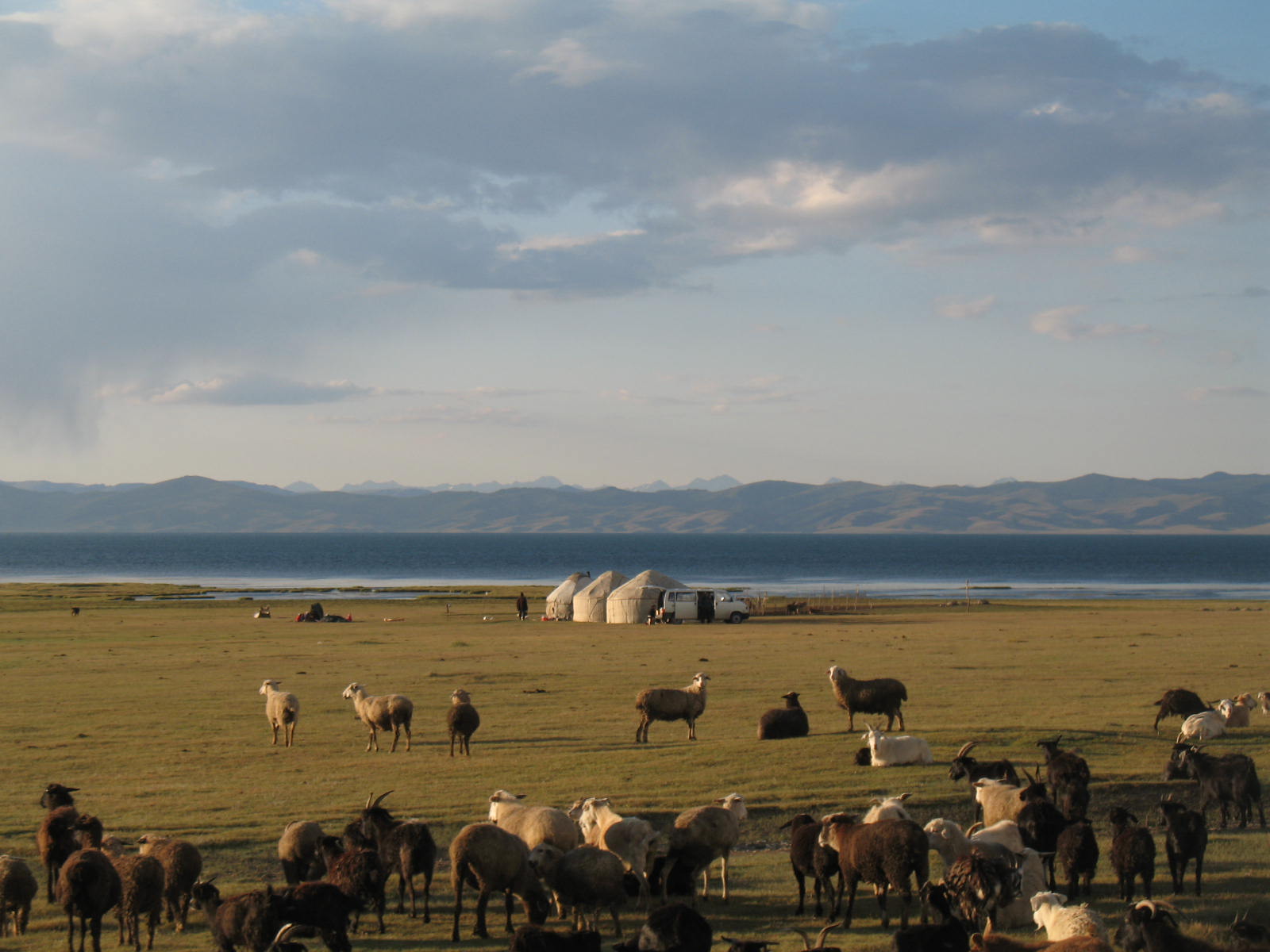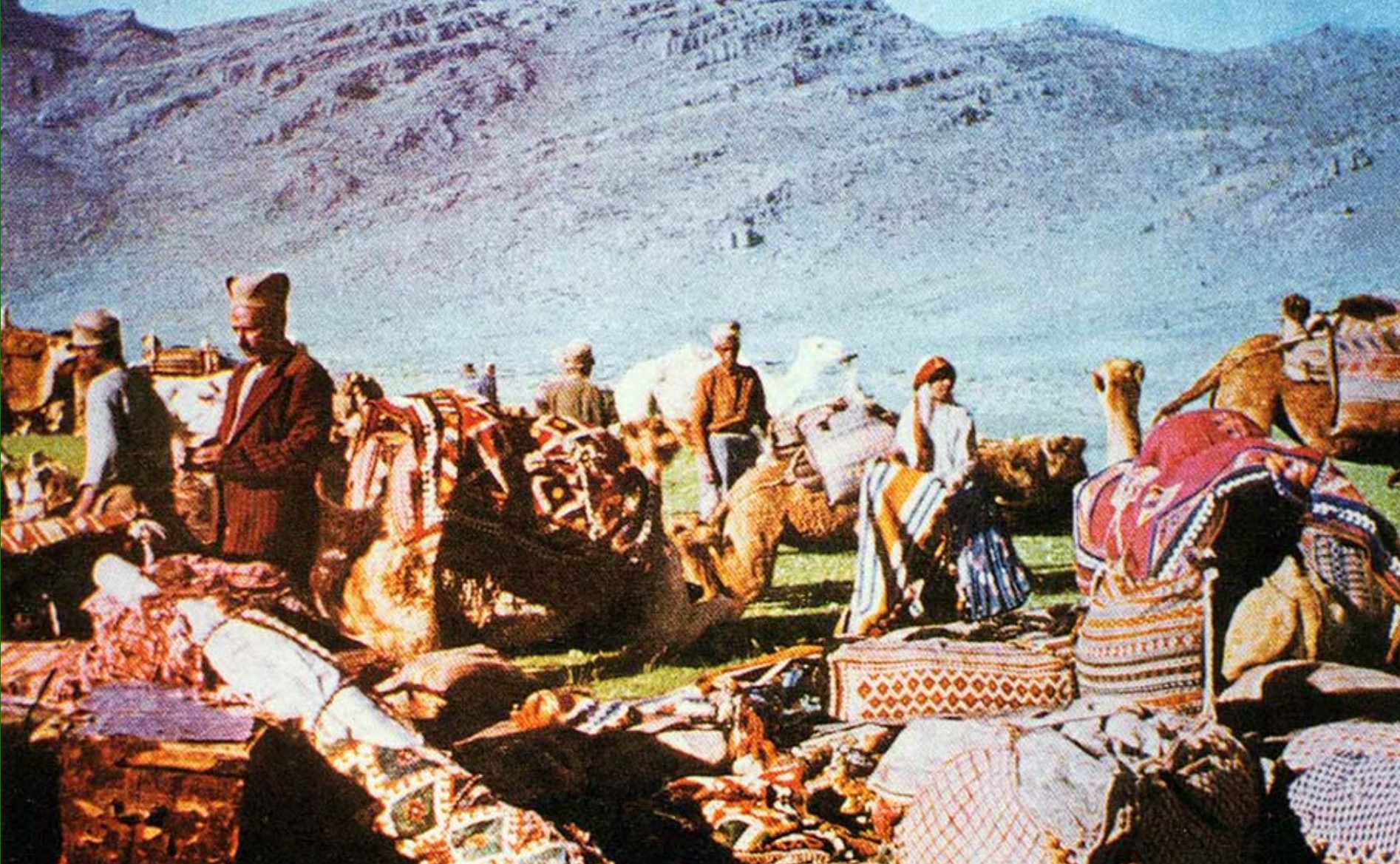|
Yaylak
Yaylak (russian: яйлаг) is a summer highland pasture associated with transhumance pastoralism in several Central and Western Asian communities. There are different variants of yaylak pastoralism forms of alpine transhumance, some of which are similar to seminomadic pastoralism, although most are similar to herdsman husbandry (such as in mountainous areas of Europe and the Caucasus). However, in the Eurasian steppes, the Middle East and North Africa, yaylak pastoralism often coexists with seminomadic pastoralism and pastoral nomadism. The term had been commonly used in Soviet anthropology. The converse term is gishlag, a winter pasture. The word gave rise to the term ''kishlak'' for rural settlements in Central Asia. Etymology and terminology Yaylak is a portmanteau which derived from Turkic roots ''yay'' "summer" and ''-lagh'' or ''-lağ'', a deverbal plus denominal suffix. The converse term is gishlag (also spelled as ''kışlak'' or ''qhishloq''), a winter pasture (from ' ... [...More Info...] [...Related Items...] OR: [Wikipedia] [Google] [Baidu] |
Kishlak
Kishlak or qishlaq ( uz, qishloq, tk, gyşlag, tr, kışlak, az, qışlaq, fa, قشلاق), or qıştaq ( ky, кыштак) qıstaw ( kz, қыстау) is a rural settlement of semi-nomadic Turkic peoples of Central Asia and Azerbaijan. The meaning of the term is "wintering place" in Turkic languages (derives from Turkic ''qış'' - winter). ''Encyclopedia of Central Asia'' Traditionally, a clay/mud fence (''dewal'', ''duval'', from : دیوار divār ') surrounds a kishlak. The term may be seen in the |
Transhumance
Transhumance is a type of pastoralism or nomadism, a seasonal movement of livestock between fixed summer and winter pastures. In montane regions (''vertical transhumance''), it implies movement between higher pastures in summer and lower valleys in winter. Herders have a permanent home, typically in valleys. Generally only the herds travel, with a certain number of people necessary to tend them, while the main population stays at the base. In contrast, ''horizontal transhumance'' is more susceptible to being disrupted by climatic, economic, or political change. Traditional or fixed transhumance has occurred throughout the inhabited world, particularly Europe and western Asia. It is often important to pastoralist societies, as the dairy products of transhumance flocks and herds (milk, butter, yogurt and cheese) may form much of the diet of such populations. In many languages there are words for the higher summer pastures, and frequently these words have been used as place names ... [...More Info...] [...Related Items...] OR: [Wikipedia] [Google] [Baidu] |
Qashqai People
Qashqai people (pronounced ; fa, قشقایی) are a tribal confederation in Iran mostly of Turkic origin. They are also believed to have incorporated Lurs, Kurds, and Arabs. Almost all of them speak a Western Turkic (Oghuz) language known as the Qashqai language, which they call "Turki", as well as Persian (the national language of Iran) in formal use. The Qashqai mainly live in the provinces of Fars, Khuzestan, Kohgiluyeh and Boyer-Ahmad, Chaharmahal and Bakhtiari, Bushehr and Southern Isfahan, especially around the cities of Shiraz and Firuzabad in Fars. The majority of Qashqai people were originally nomadic pastoralists and some remain so today. The traditional nomadic Qashqai traveled with their flocks twice yearly between the summer highland pastures north of Shiraz roughly 480 km or 300 miles south and the winter pastures on lower (and warmer) lands near the Persian Gulf, to the southwest of Shiraz. The majority, however, have now become partially or wholly s ... [...More Info...] [...Related Items...] OR: [Wikipedia] [Google] [Baidu] |
Karl Heinrich Menges
Karl Heinrich Menges (April 22, 1908 – September 20, 1999) was a German linguist known for his advocacy of the Altaic hypothesis. He was a faculty member at Columbia University in New York and subsequently at the University of Vienna. Menges was born in Frankfurt, where he was educated at the Lessing Gymnasium. He studied in Frankfurt and Munich and earned his doctorate at the University of Berlin in 1932. William H. Honan"Karl H. Menges, 91, and Expert On Central Asian Languages" ''The New York Times'', September 25, 1999. Politically identifying as a Catholic centrist, he resisted the Nazi regime, distributing leaflets. In 1936 he was arrested by the Gestapo and interrogated for five hours; on a tip-off from a classmate, after being released pending trial he fled to Czechoslovakia, after the annexation of the Sudetenland moving on to Turkey. Menges taught at Columbia University in New York for 36 years, from 1940 to 1976. He had been invited to teach Slavic languages; the ... [...More Info...] [...Related Items...] OR: [Wikipedia] [Google] [Baidu] |
Agriculture In Turkey
Agriculture in Turkey is an important part of economy of Turkey, the economy, and is the responsibility of the Ministry of Agriculture and Forestry (Turkey), Ministry of Agriculture and Forestry. Half of the land is agricultural, employing 18% of the workforce, and providing 10% of exports, and 7% of GDP in 2020. There are half a million farmers. Turkey is a major producer of wheat, sugar beets, milk, poultry, cotton, tomatoes, and other fruits and vegetables. , Turkey is the world's largest producer of hazelnuts and apricots. In 2021, Turkey received 65 percent of all imported wheat from Russia and more than 13 percent from Ukraine. Greenhouse gas emissions by Turkey#Agriculture, fishing and waste, Turkish agriculture emits greenhouse gases. According to the World Bank the sector should adapt more to climate change in Turkey and make technical improvements. 14% of food was lost during agricultural processing in 2016, and 23% was trashed by consumers before eating and 5% as ... [...More Info...] [...Related Items...] OR: [Wikipedia] [Google] [Baidu] |
Turkic Words And Phrases
Turkic may refer to: * anything related to the country of Turkey * Turkic languages, a language family of at least thirty-five documented languages ** Turkic alphabets (other) ** Turkish language, the most widely spoken Turkic language * Turkic peoples, a collection of ethno-linguistic groups ** Turkic migration, the expansion of the Turkic tribes and Turkic languages, mainly between the 6th and 11th centuries ** Turkic mythology ** Turkic nationalism (other) ** Turkic tribal confederations See also * * Turk (other) * Turki (other) * Turkish (other) * Turkiye (other) * Turkey (other) * List of Turkic dynasties and countries The following is a list of dynasties, states or empires which are Turkic-speaking, of Turkic origins, or both. There are currently six recognised Turkic sovereign states. Additionally, there are six federal subjects of Russia in which a Turkic ... {{disambiguation Language and nationality d ... [...More Info...] [...Related Items...] OR: [Wikipedia] [Google] [Baidu] |
Cultural Anthropology
Cultural anthropology is a branch of anthropology focused on the study of cultural variation among humans. It is in contrast to social anthropology, which perceives cultural variation as a subset of a posited anthropological constant. The portmanteau term sociocultural anthropology includes both cultural and social anthropology traditions. Anthropologists have pointed out that through culture people can adapt to their environment in non-genetic ways, so people living in different environments will often have different cultures. Much of anthropological theory has originated in an appreciation of and interest in the tension between the local (particular cultures) and the global (a universal human nature, or the web of connections between people in distinct places/circumstances). Cultural anthropology has a rich methodology, including participant observation (often called fieldwork because it requires the anthropologist spending an extended period of time at the research locat ... [...More Info...] [...Related Items...] OR: [Wikipedia] [Google] [Baidu] |
Nomads
A nomad is a member of a community without fixed habitation who regularly moves to and from the same areas. Such groups include hunter-gatherers, pastoral nomads (owning livestock), tinkers and trader nomads. In the twentieth century, the population of nomadic pastoral tribes slowly decreased, reaching an estimated 30–40 million nomads in the world . Nomadic hunting and gathering—following seasonally available wild plants and game—is by far the oldest human subsistence method. Pastoralists raise herds of domesticated livestock, driving or accompanying them in patterns that normally avoid depleting pastures beyond their ability to recover. Nomadism is also a lifestyle adapted to infertile regions such as steppe, tundra, or ice and sand, where mobility is the most efficient strategy for exploiting scarce resources. For example, many groups living in the tundra are reindeer herders and are semi-nomadic, following forage for their animals. Sometimes also described as "nomad ... [...More Info...] [...Related Items...] OR: [Wikipedia] [Google] [Baidu] |
Bakhtiari People
The Bakhtiari (also spelled Bakhtiyari; fa, بختیاری) are a Lur tribe from Iran. They speak the Bakhtiari dialect of the Luri language. Bakhtiaris primarily inhabit Chaharmahal and Bakhtiari and eastern Khuzestan, Lorestan, Bushehr, and Isfahan provinces. Bakhtiari tribes have an especially large population concentration in the cities of Masjed Soleyman, Izeh, Shahr-e Kord, and Andika, and the surrounding villages. A small percentage of Bakhtiari are still nomadic pastoralists, migrating between summer quarters (''sardsīr'' or ''yaylāq'') and winter quarters (''garmsīr'' or ''qishlāq''). Numerical estimates of their total population vary widely. Origins Although there have been several suggested theories for the origin of the Bakhtiyaris, historians and researchers generally agree that they are Lurs. According to folklore, the Lurs are descended from a group of youngsters who survived and fled from the demon Zahhak, a demonic figure who is mentioned in Zoroastr ... [...More Info...] [...Related Items...] OR: [Wikipedia] [Google] [Baidu] |
Zagros Mountains
The Zagros Mountains ( ar, جبال زاغروس, translit=Jibal Zaghrus; fa, کوههای زاگرس, Kuh hā-ye Zāgros; ku, چیاکانی زاگرۆس, translit=Çiyakani Zagros; Turkish: ''Zagros Dağları''; Luri: ''Kuh hā-ye Zāgros'' ''کویا زاگرس'') are a long mountain range in Iran, northern Iraq, and southeastern Turkey. This mountain range has a total length of . The Zagros mountain range begins in northwestern Iran and roughly follows Iran's western border while covering much of southeastern Turkey and northeastern Iraq. From this border region, the range continues to the southeast under also the waters of the Persian Gulf. It spans the southern parts of the Armenian highland, the whole length of the western and southwestern Iranian plateau, ending at the Strait of Hormuz. The highest point is Mount Dena, at . Geology The Zagros fold and thrust belt was mainly formed by the collision of two tectonic plates, the Eurasian Plate and the Arabian Plat ... [...More Info...] [...Related Items...] OR: [Wikipedia] [Google] [Baidu] |
Neolithic
The Neolithic period, or New Stone Age, is an Old World archaeological period and the final division of the Stone Age. It saw the Neolithic Revolution, a wide-ranging set of developments that appear to have arisen independently in several parts of the world. This "Neolithic package" included the introduction of farming, domestication of animals, and change from a hunter-gatherer lifestyle to one of settlement. It began about 12,000 years ago when farming appeared in the Epipalaeolithic Near East, and later in other parts of the world. The Neolithic lasted in the Near East until the transitional period of the Chalcolithic (Copper Age) from about 6,500 years ago (4500 BC), marked by the development of metallurgy, leading up to the Bronze Age and Iron Age. In other places the Neolithic followed the Mesolithic (Middle Stone Age) and then lasted until later. In Ancient Egypt, the Neolithic lasted until the Protodynastic period, 3150 BC.Karin Sowada and Peter Grave. Egypt in th ... [...More Info...] [...Related Items...] OR: [Wikipedia] [Google] [Baidu] |

.jpg)






